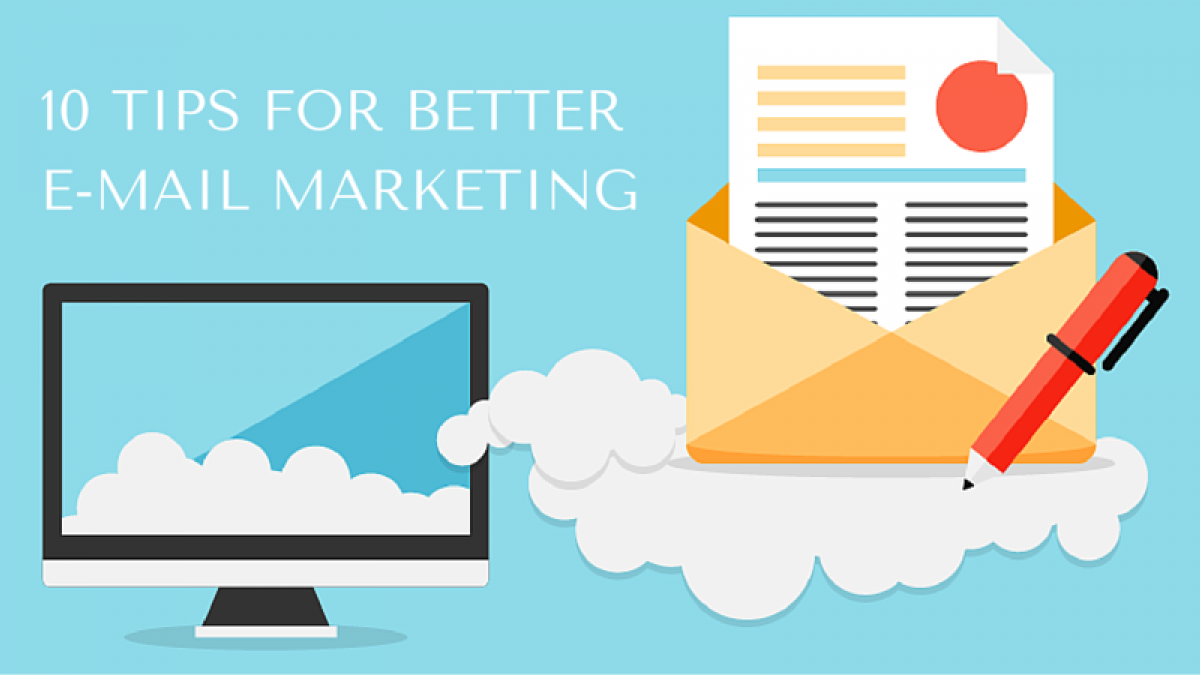
10 Tips for Better E-Mail Marketing
As email users, we all sort through overflowing inboxes, full of messages from the companies that we have done business with or shown interest in at some point. We scan through the senders and subjects and make snap decisions about what gets deleted, marked as junk, reported as spam, ignored completely, or actually opened and read.
As marketers, we aim to send one of those few emails that gets opened, read, and acted upon. Email marketing can be a tremendous tool for communicating directly with past, current, and prospective customers. According toan ExactTarget study, 77% of consumers prefer to receive permission-based marketing through email, with 44% of email recipients making a buying decision based on a promotional email. When done effectively, email marketing can strengthen relationships, improve website traffic, build brand loyalty, and make sales.
If you're not getting the results you want from your carefully crafted emails, try these tips for more effective email marketing:
1. Build your subscriber list.
Do not be a spammer. Period. Sending unsolicited email can damage a good company’s reputation and is rarely effective. Permission-based or opt-in email marketing helps build relationships based on trust, with people who want to receive your content. Make it easy to sign up for emails from your website or blog, and make clear the benefits of subscribing.
Example: Do you need to recruit and retain higher-quality employees? We are here to help.
Share your staffing wisdom with me: [Enter email address]
Another popular method is to offer a discount code in return for subscribing to emails, which will capture customers who are ready to purchase and will be open to more information about your products.
You can also gather email addresses off-line, such as at trade shows and conferences. If people were interested enough to give you their contact information, then they'll be open to maintaining communication and providing more information may convert them to a customer.
2. Let them go.
Make it just as easy for people to opt-out as to opt-in. Although you want a large email list, it's more important that your list is robust and only includes the people who actually want to hear from you. If they don't want your messages, there's no reason to try to keep them against their will. Include a link or instructions about how to unsubscribe in every email. The option to unsubscribe reassures people that they are not trapped or being spammed -- plus, it's a legal requirement.
3. Address your subscribers as you would a friend.
Make your email more personal by using the recipient’s name, rather than addressing them as a group, or referring to them as “customers” or “subscribers.” A never-ending list of email addresses in the ‘To:’ field is always a red flag for spam. Although you may not have a personal relationship with every customer, people feel more valued if they are individually acknowledged.
Also, use your actual name in your email address and when closing the message. Receiving an email from noreply@yourbusiness.com communicates that the subscriber shouldn't even try to communicate with your company. But when JeffreyJ@yourbusiness.com invites people to reply with their questions or input, and then actually checks the email account and responds back, the potential customer will feel valued.
4. Craft a great subject.
As a people scan through their inboxes, the subject line of your email is the most crucial factor in determining whether the email is opened, deleted, or sent to the spam folder. A full third of email recipients decide whether or not to open the email based on the subject line alone, so make sure your subject line reflects the content of the email.
Email subject lines are an art unto themselves, and we could easily make a whole blog post about how to write email subject lines that get opened. The top tips are to stir readers’ curiosity so that they will want to know more, use numerals to slow down the rapidly scanning eye, and keep it short: subject lines fewer than 10 characters longhave a 58% open rate.
Not: February News and Reviews
More like: There's still time! 10 easy Valentine solutions for the romantically challenged.
5. Keep it casual.
When it comes to composing your message, show off your winning personality. Write like you are talking to a friend, and ask questions that you want your reader to answer for themselves. Don’t automate your greetings or use boring, formulaic writing full of jargon. Would you rather read a message from a corporate robot, or from that friendly, witty guy that works at the company down the road?
6. Keep it brief.
People get a lot of email, and often will not take the time to read anything lengthy. In general, the more frequently you send emails, the shorter they should be. If you email daily, do not send anything longer than a “Tip of the Day.” Keep the purpose of your message in mind, and only email when you have something important to say.
7. Give them a deadline.
Create a sense of urgency by making a deadline that's not too far off in the future. This lets people know what they are going to miss if they do not act soon. If you are advertising a sale or offering a promotional code/coupon, call attention to the expiration date. Do not let them procrastinate!
8. Link it up.
Insert multiple links within the body of your message, wherever your content could be amplified by a relevant blog post or website landing page. Every link is an opportunity for the reader to click through to your website, and you want to make that as convenient as possible.
9. Reward people for reading your email.
Offering a promotional code or other coupon may get people’s attention (and will also help you track your email effectiveness). You can also reward readers with a tip of the day, an inspiration, or something to make them smile. The idea is that your reader should be glad to see your email pop up in their inbox, and know that you're going to provide them with something they want.
Take a look at your own full-to-the-brim inbox for clues on how to stand out. Which emails do you look forward to, and which make you look for the unsubscribe link? Personally, I always open my daily email from the Content Marketing Institute, because I know there will be at least one article in there that I want to check out. On the other hand, I always ignore emails from Ann Taylor, because I don't want to give myself any more reasons to spend on clothes. (Sorry, Ann Taylor. I still like your classic style, I'm just not going to open your emails.)
10. Test your formatting.
If you open an email from a company, and it looks jumbled and disorganized on your screen, how likely are you to muddle through it? The answer is: not at all. So before sending a carefully crafted email out to all your subscribers, test your format with email addresses from the major email providers, on different screen formats, and on various mobile devices. Software tools like Email on Acid can help you test emails quickly and thoroughly by sending you an interactive preview of how your email will appear in various platforms, and providing you with pre-tested templates.
Have you taken note of how you handle your own inbox? Which emails do you open, and why? What subject lines pique your curiosity? And for the senders that eventually end up added to the spam filter, why were their messages not worthy of your time?

